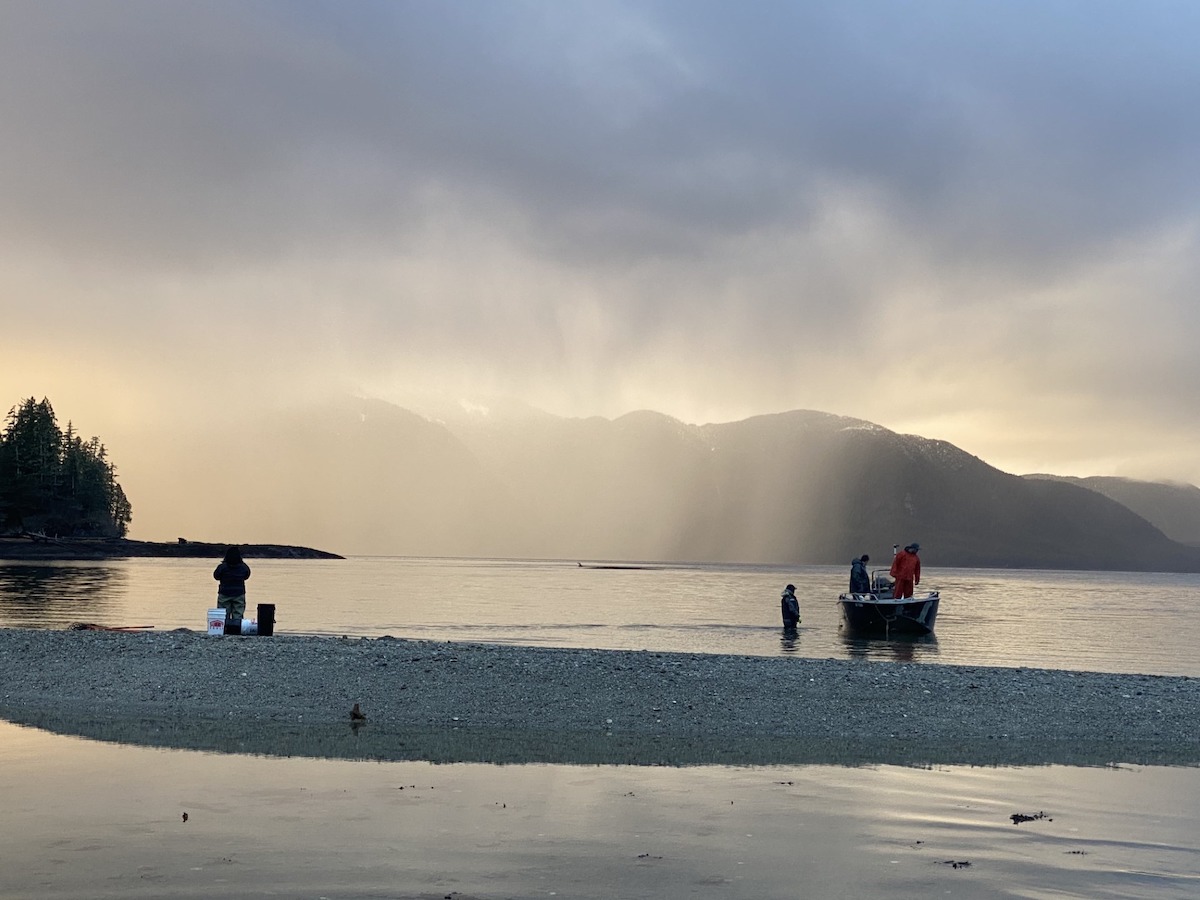Photo:The BC government and Gitga’at and Gitxaała Nations are implementing a new 14-square-kilometre wildlife management area to protect the Kitkiata and Kishkosh Inlets off the Douglas Channel that will be stewarded by the nation’s Guardians / Gitga’at Guardian patrol boat photo by **604*250** / Flickr (CC BY-NC 2.0)
By Rochelle Baker
Local Journalism Initiative Reporter
Canada’s National Observer
Two small inlets with immense ecological and cultural importance on BC’s remote north coast are getting some initial protection as part of the Great Bear Sea project.
The province and the Gitga’at and Gitxaała Nations are implementing a new 14-square-kilometre wildlife management area to protect the Kitkiata and Kishkosh Inlets off the Douglas Channel west of Kitimat. The waterways shelter pristine river systems, extensive estuaries, tidal flats and shorelines, as well as the at-risk seabirds and salmon that rely on them.
The inlets include both beautiful natural areas and also key food harvesting and sacred cultural sites that have sustained the Gitga’at Nation before and after colonial contact, said Kyle Clifton, acting director of the Gitga’at Oceans and Lands Department.
“It’s a small area, but it’s especially important to the Gitga’at,” Clifton said.
The Gitga’at are known as the “People of the Cane” — which reflects their relationship with their traditional territories.
“It comes from areas in our homelands in the Skeena and in the [coastal] inlets where it is too shallow to paddle your canoe — so you push yourself around with a [cane] pole.”
Provincial wildlife management areas allow some activities to take place as long as the key conservation values are protected. This is because unmanaged access can pose threats, Clifton said.
The inlets border two land conservancies established by the province in 2007.
The Gitga’at and Gitxaała will work with the province to develop integrated management plans to manage activities in the region that include pristine lakes, old growth forests and rich wetlands that support grizzlies as well as at-risk long-tailed duck and trumpeter swans.
Building the Great Bear Sea
The new wildlife management area is the first step and interim layer of protection for the inlets that fall under the umbrella of the Great Bear Sea Network. That initiative — recently endorsed by 15 First Nations and the federal and provincial governments after decades of work — aims to create a string of marine conservation hotspots stretching from northern Vancouver Island to the Alaska border, an area also known as the Northern Shelf Bioregion.
The Gitga’at expect additional protections for the inlets will also be created with the federal government as the Great Bear Sea initiative progresses, Clifton said.
The protected areas will advance a sustainable future for the coast, abundant fisheries and healthy oceans that meet the needs of all British Columbians, said Christine Smith Martin, CEO of the Coastal First Nations-Great Bear Initiative.
“The marine protected area network is designed for and by the people of the coast to protect and conserve these important resources to grow our local economies, enhance culture and biodiversity and develop the tools to become more self-reliant,” Smith said.
The new wildlife protected area includes key Gitga’at shellfish harvest areas and sensitive archeological sites.
There is no heavy commercial fishing or industry in the inlets. However, hunting and recreational activities, including sport fishing and shellfish harvesting, do take place, Clifton said.
While in isolation such activities may not appear to harm natural areas, they can accumulate or have outsized impacts, he said.
For instance, boats equipped with powerful engines can churn up the shallow and sensitive estuaries or river beds, destroying salmon eggs, important to protect healthy stocks. And hunters with firearms who assume they are in a remote area can put community members harvesting food at risk, he said.
There’s also the danger that campers may desecrate important village or archaeological sites by setting up campsites, outdoor latrines or campfires.
“People may think they are in the wild and not doing much damage,” Clifton said. “They don’t realize the space could easily be impacted by just a few people visiting.”
The Gitga’at rely on the inlets’ winter harvest areas, where the community and families gather to collect salmon and other fish, berries, shellfish and to hunt, he said. Elders in particular depend on the inlets for a substantial amount of the food in their diet.
“People who live in the city, if your favourite grocery store burns down, you can go next door and get the exact same thing,” Clifton said.
“If we lose a place like one of these inlets and the food that comes from there, it’s not something that can be easily replaced.”
The Gitga’at Guardian Watchmen have a base there and regularly patrol the area, during which they do field work, monitor activities and safeguard the inlets, he said.
“People want to go fishing and hunting and all that stuff and we may not necessarily want to shut down completely,” Clifton said. “But, it is something we would need to manage to make sure that it’s being done correctly.”

